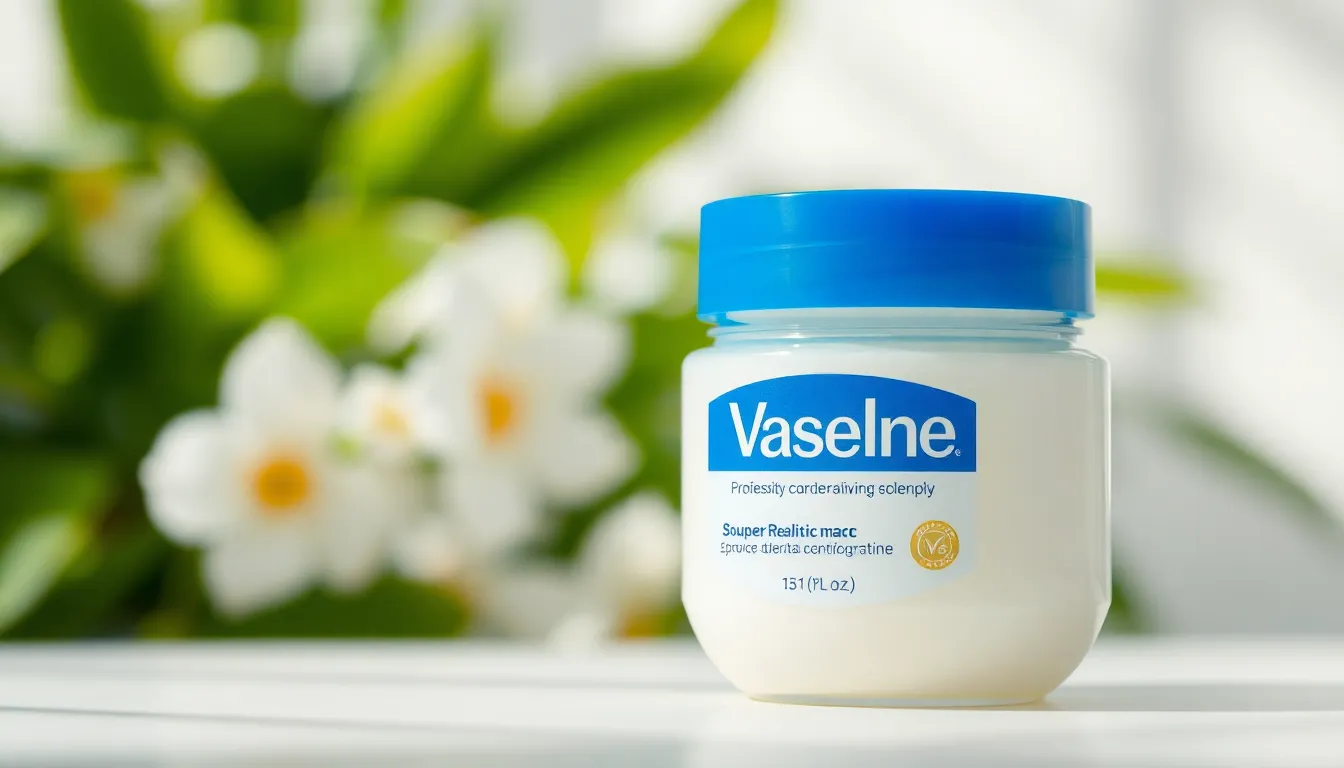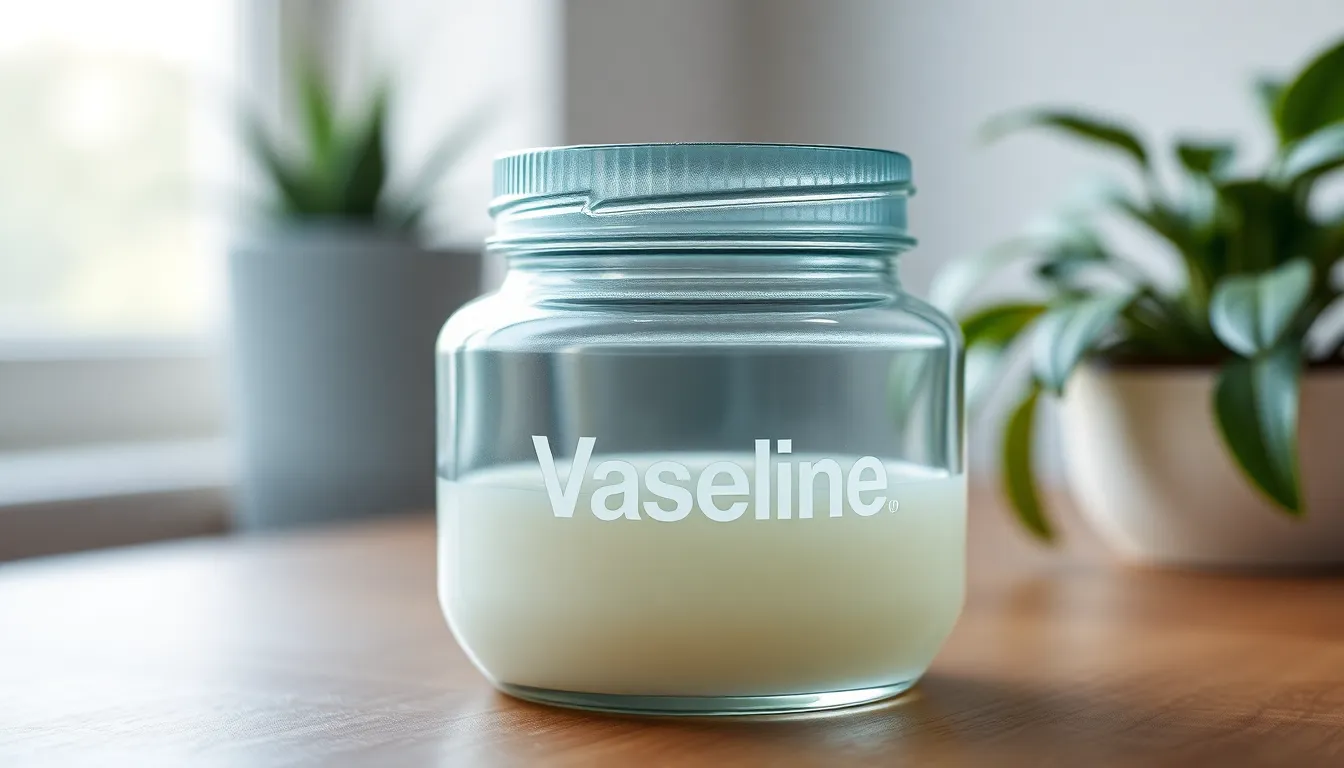Key Takeaways
- Vaseline is an oil-based product, primarily composed of refined petroleum jelly without any water content, making it highly occlusive and effective at sealing in moisture.
- Its simple formulation consists almost entirely of pharmaceutical-grade petrolatum, with occasional minor additions like wax or fragrance in cosmetic variants.
- Oil-based products like Vaseline provide long-lasting skin protection and barrier support, making them useful for treating dry skin, chapped lips, and aiding wound healing.
- Compared to water-based alternatives, Vaseline offers greater stability, shelf life, and resistance to evaporation, but does not add moisture to the skin.
- Potential drawbacks include pore blockage in acne-prone individuals and limited benefit for dehydrated skin, as Vaseline locks in existing moisture but does not hydrate.
- Regulatory compliance and safety are ensured through rigorous quality assurance measures, including independent certificates of analysis and batch traceability from reputable suppliers.
Vaseline is definitively an oil-based product, composed primarily of refined petroleum jelly without any water content, making it highly effective at creating an occlusive barrier that locks in moisture. This anhydrous formulation of mineral oils and waxes provides long-lasting skin protection and barrier support, particularly useful for treating dry skin and supporting wound healing. Quality suppliers like Range Products ensure rigorous testing and certificates of analysis for pharmaceutical-grade petroleum derivatives used in cosmetic manufacturing.
What Is Vaseline?
Vaseline refers to a branded form of petroleum jelly, a semi-solid mixture primarily composed of mineral oils and waxes. Vaseline contains refined petroleum, which gives it a clear, odourless quality and a smooth texture. Manufacturers source raw petroleum and refine it to remove impurities, resulting in a product suitable for direct skin application.
Petroleum jelly, the main component in Vaseline, creates an occlusive barrier on the skin, locking in moisture and protecting against external irritants. Medical, cosmetic and manufacturing sectors use Vaseline for skin moisturisation, wound healing and as a processing aid for delicate surfaces. Vaseline lacks water content, which distinguishes it from emulsified lotions and creams that combine water and fats.
Refined petroleum-based products, such as Vaseline, undergo rigorous testing to meet health and safety standards set by regulatory bodies. Certificates of analysis accompany quality-assured batches to ensure contaminants stay at undetectable levels. Global manufacturers and wholesale suppliers work with trusted partners to maintain consistent sourcing and independent verification—much like practices found at Range Products in Western Australia, where third-party testing and transparent documentation form core sourcing standards for all raw materials.
Ingredients In Vaseline

Vaseline features a simple, highly refined blend developed for skin protection and moisture retention. Each ingredient supports the brand’s reputation for purity and reliability in cosmetic and medical contexts.
Petroleum Jelly Explained
Petroleum jelly, the core ingredient in Vaseline, results from the purification of hydrocarbons sourced from mineral oils. Filtration and distillation produce an odourless and stable semi-solid. This process removes impurities, yielding a pharmaceutical-grade product. Certificates of analysis from reputable suppliers, including those serving medical and personal care markets, verify compliance with quality standards such as BP (British Pharmacopoeia) or USP (United States Pharmacopeia). Range Products in Welshpool, Western Australia, sources petroleum derivatives globally, offers batch documentation, and supports traceability. Refined petroleum jelly remains inert, non-comedogenic, and safe for topical use on sensitive or compromised skin.
Additional Components In Vaseline
Vaseline rarely contains additional ingredients beyond its refined petroleum base, especially in classic formulations. Some cosmetic variants may include microcrystalline wax, paraffin wax, or fragrance for altered texture or scent. Consistent ingredient quality relies on independent laboratory verification and documented chain of custody. Rigid quality assurance, supported by suppliers such as Range Products, ensures ingredient safety for bulk wholesale and personal care manufacture. Ingredient data sheets detail melting point, consistency, and odour parameters, satisfying product developers and regulatory requirements. No water, botanical oils, or preservatives appear in standard Vaseline, confirming its categorisation as an anhydrous, oil-based product.
Is Vaseline An Oil Based Product?

Vaseline qualifies as an oil-based product. Its anhydrous, semi-solid structure comes from petrolatum, a refined blend of mineral oils and waxes, sourced globally and tested for purity.
How Oil-Based Products Are Defined
Oil-based products are defined by the absence of water and the dominance of lipid content. Formulations classified as oil-based use hydrocarbons, mineral oils, or carrier oils as their main components, examples include petroleum jelly, liquid paraffin, and castor oil. These ingredients offer high occlusivity and resistance to evaporation, making them stable and suitable for environments demanding moisture retention—such as skincare and wound care. Quality assurance in oil-based formulations, like Vaseline and bulk mineral oil blends distributed by Range Products in Welshpool, Western Australia, necessitates independent laboratory verification and valid certificates of analysis to ensure safety, grade, and consistency.
Comparison With Water-Based Alternatives
Water-based alternatives use emulsified blends of water and soluble compounds such as glycerin or botanical extracts, examples include cream moisturisers and hydrogels. These blends deliver active agents rapidly but tend to evaporate faster and may include preservatives to inhibit microbial growth. Oil-based products, such as Vaseline or carrier oils supplied in bulk quantities by Range Products, yield longer-lasting protective barriers and contain zero water content. Manufacturers, aromatherapists, and cosmetic formulators choose between oil-based and water-based bases based on the required application, shelf life, and compatibility with active ingredients. Independent testing by suppliers, including documentation of water content and preservative status, supports transparent ingredient selection.
Uses And Benefits Of Oil-Based Products Like Vaseline
Oil-based products create an occlusive barrier over the skin, limiting water loss and environmental exposure. Vaseline, with its petroleum jelly base, suits applications requiring long-lasting moisture retention and protection from irritants.
Skin care professionals use oil-based products like Vaseline for treating chapped lips and supporting wound healing. These products prove effective in harsh climates or for sensitive skin types, where anhydrous formulas prevent further irritation from external factors.
Wound care relies on petrochemical gels, including Vaseline, to accelerate healing and minimise scabbing, as seen in clinical recommendations from NHS UK and DermNet NZ. Cosmetic formulators, small enterprises and large manufacturers select oil-based bases for balms and salves due to enhanced stability and longer shelf life, compared to water-based emulsions.
For ingredient procurement and distribution, suppliers such as Range Products in Welshpool, Western Australia, source certified mineral oils and waxes globally and provide independent Certificates of Analysis for bulk petrolatum and cosmetic waxes. These quality assurance measures, verified through accredited labs, ensure the purity, safety, and traceability essential for large-volume users in skincare, aromatherapy, and cosmetic manufacturing.
Bulk buyers in the home lifestyle, beauty, and bath products sectors request oil-based raw materials for their compatibility with essential oils, as many carrier bases in anhydrous creams and ointments maintain fragrance longevity and resist microbial growth. Quality monitoring relies on industry benchmarks and supply chain transparency, with suppliers like Range Products offering technical support to meet regulatory and formulation standards.
Potential Drawbacks And Considerations
Vaseline’s petroleum jelly composition forms an occlusive barrier, which can block pores in acne-prone skin if used excessively. Cosmetic dermatology sources, including the American Academy of Dermatology, associate oil-based products with higher comedogenicity when compared to water-based creams, making them less suitable for oily or blemish-prone skin types.
Prolonged use of Vaseline on skin that hasn’t been cleansed may trap dirt and bacteria, increasing the risk of irritation or secondary infection, particularly with frequent reapplication. Users with existing skin conditions, such as eczema or rosacea, report that heavy occlusives sometimes worsen flare-ups according to clinical guidance from NHS UK.
Vaseline lacks humectant or water-attracting agents, so it doesn’t add moisture but only locks in what’s already present, which limits its effectiveness for dehydrated skin lacking both oil and water. Formulators prefer combining occlusive oil-based products with hydrating bases for balanced moisture.
Manufacturers and bulk ingredient buyers working with Range Products in Welshpool, Western Australia access petrolatum with independent Certificates of Analysis and batch traceability, minimising contamination or adulteration risk. Some international markets restrict petrochemical or mineral oil ingredients in labelling or certifications, so regulatory compliance requires supplier-provided quality documentation and origin transparency.
Conclusion
Understanding whether Vaseline is oil-based helps users make better skincare decisions and choose products that suit their needs. Its unique formulation offers reliable protection and moisture retention for various skin types and conditions.
As with any skincare product it’s important to assess individual skin requirements and consult professionals when needed. Staying informed about product composition and quality standards ensures safer and more effective daily routines.
Frequently Asked Questions
Is Vaseline an oil-based product?
Yes, Vaseline is an oil-based product. It is primarily made from petroleum jelly, which is a purified, semi-solid blend of mineral oils and waxes, containing no water.
What are the main ingredients in Vaseline?
Vaseline consists mainly of petroleum jelly, derived from mineral oils and waxes. Classic formulations are almost entirely petrolatum, while some variants may include microcrystalline wax or fragrance.
How does Vaseline work for the skin?
Vaseline creates a protective barrier on the skin’s surface, locking in moisture and shielding against external irritants. This helps soothe dry or chapped skin and supports wound healing.
Can Vaseline be used on sensitive skin?
Yes, Vaseline is suitable for most sensitive skin types because it’s hypoallergenic and fragrance-free in its classic form. However, always patch-test if you have specific skin concerns.
Is Vaseline recommended for wound healing?
Yes, medical guidance and clinical sources like NHS UK recommend Vaseline for wound care, as it helps keep wounds moist and promotes faster healing with less scabbing.
Does Vaseline clog pores?
Vaseline can clog pores, especially if you have acne-prone skin. Its oil-based composition creates an occlusive layer that may trap dirt and bacteria if not used on clean skin.
Is Vaseline a moisturiser or a humectant?
Vaseline is a moisturiser, not a humectant. It prevents moisture loss by forming a barrier but does not attract water to the skin, so it’s best used with other hydrating products.
Are there preservatives in Vaseline?
No, standard Vaseline does not contain preservatives. It is anhydrous (water-free), so there’s no need for added preservatives to prevent bacteria or mould growth.
Is Vaseline safe for use on lips?
Yes, Vaseline is safe and commonly used on lips to prevent dryness and soothe chapping. Just ensure the product is clean and suitable for cosmetic use.
How does Vaseline compare to water-based moisturisers?
Vaseline is longer-lasting and more stable than water-based moisturisers because it doesn’t evaporate. However, water-based moisturisers may feel lighter and are better for quick hydration.
